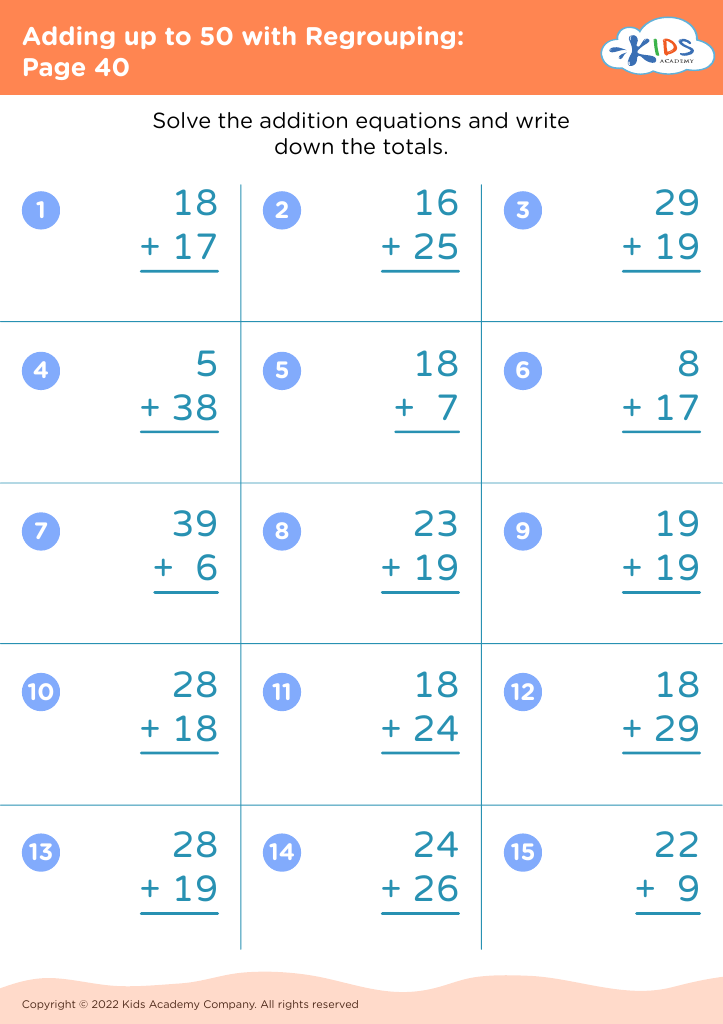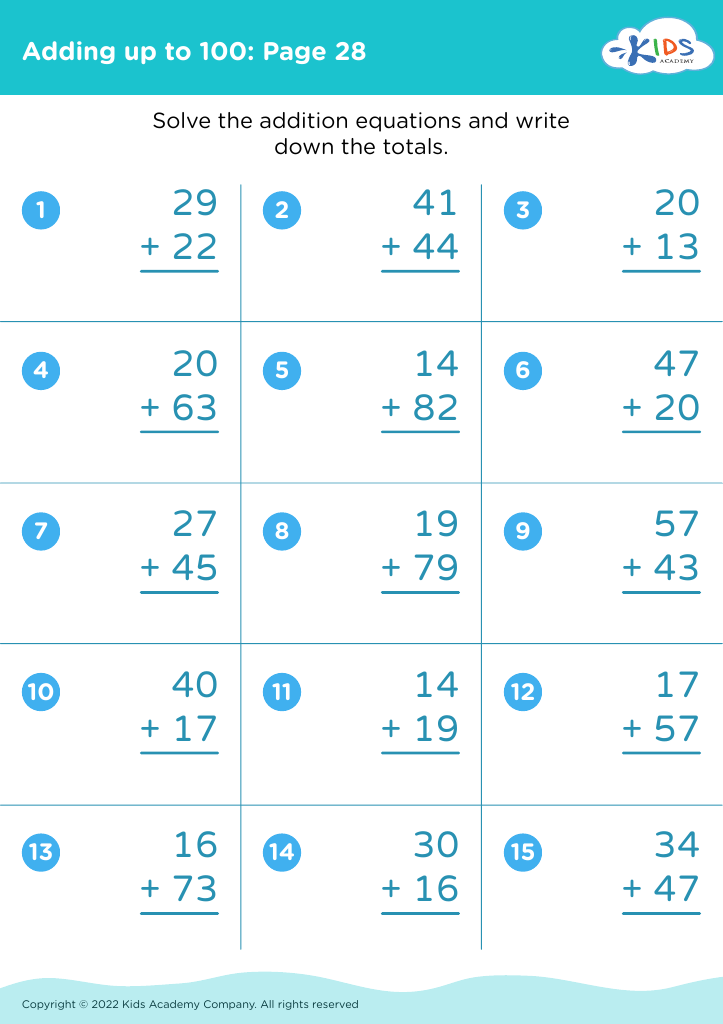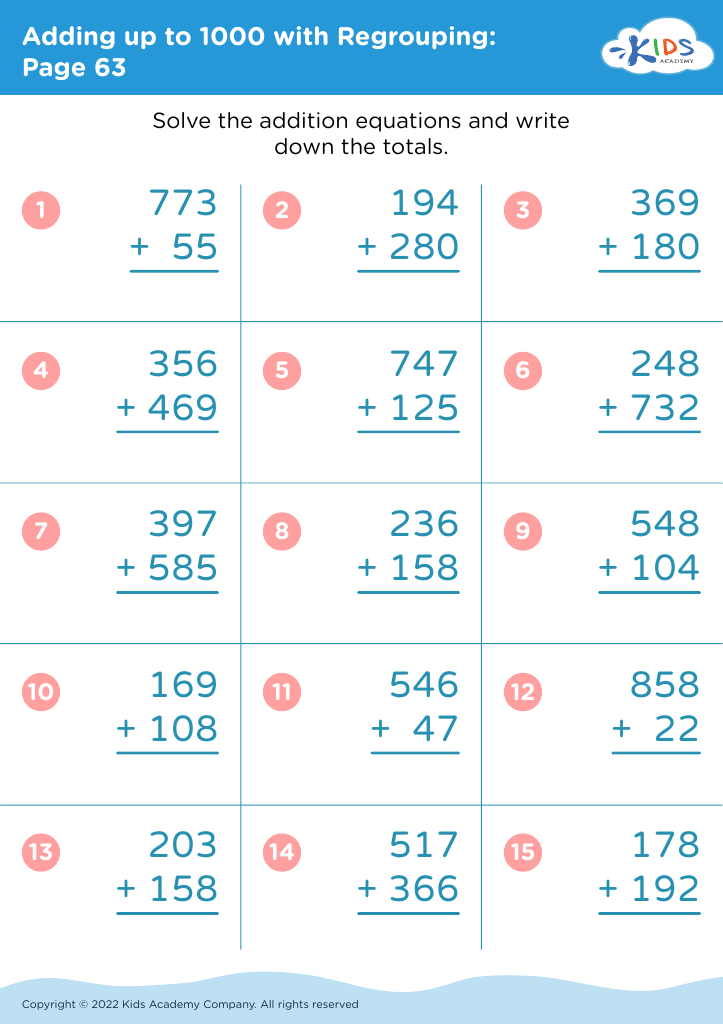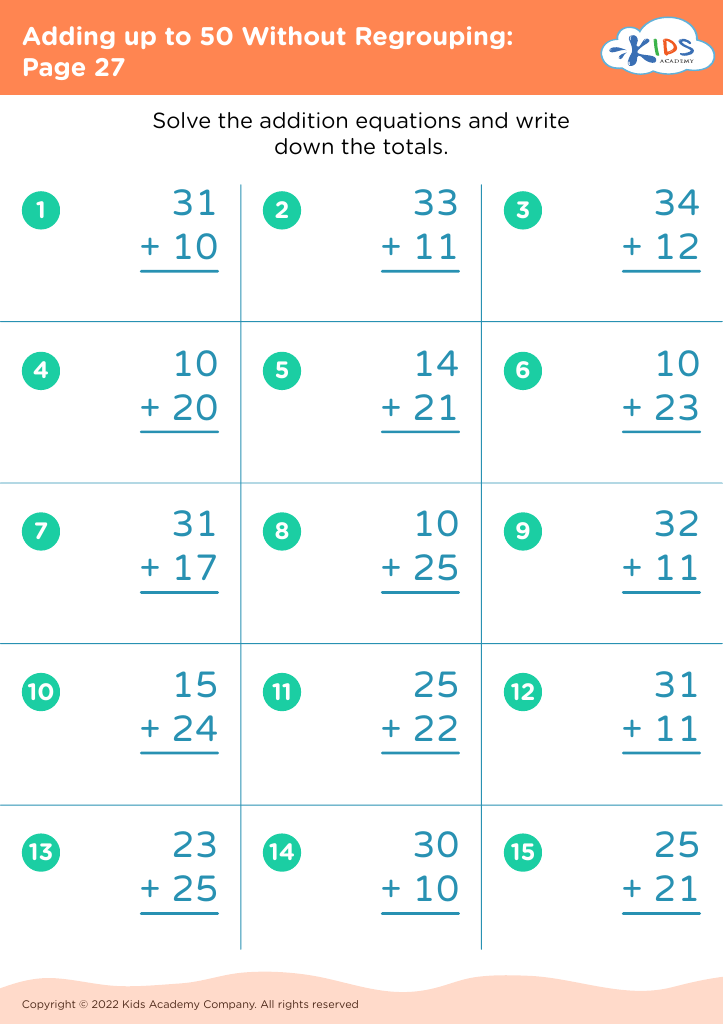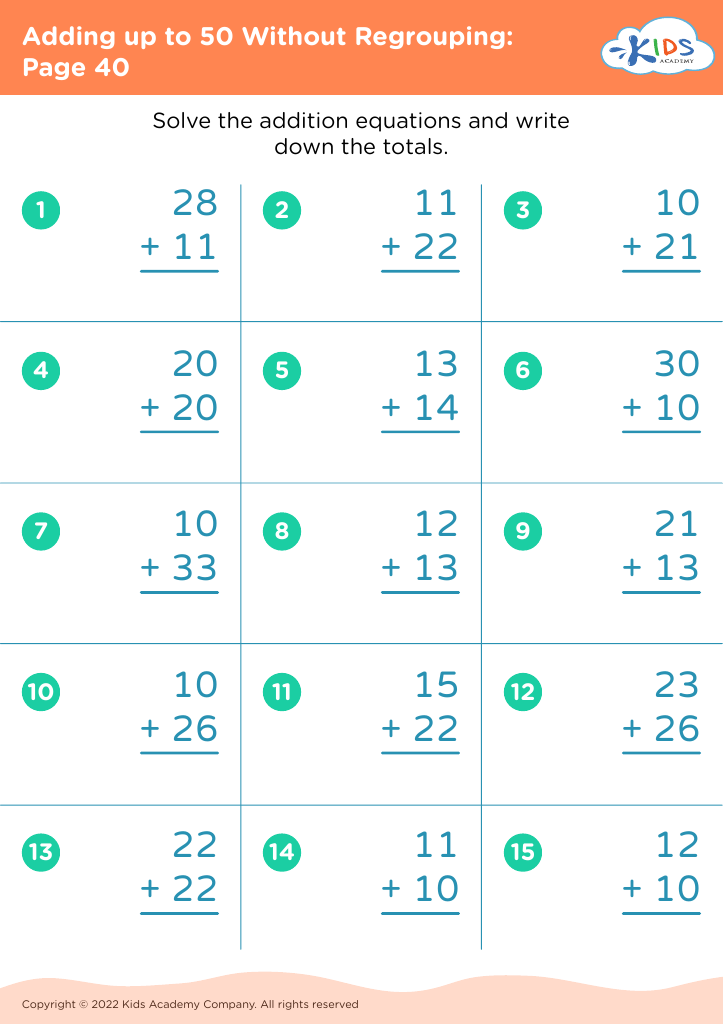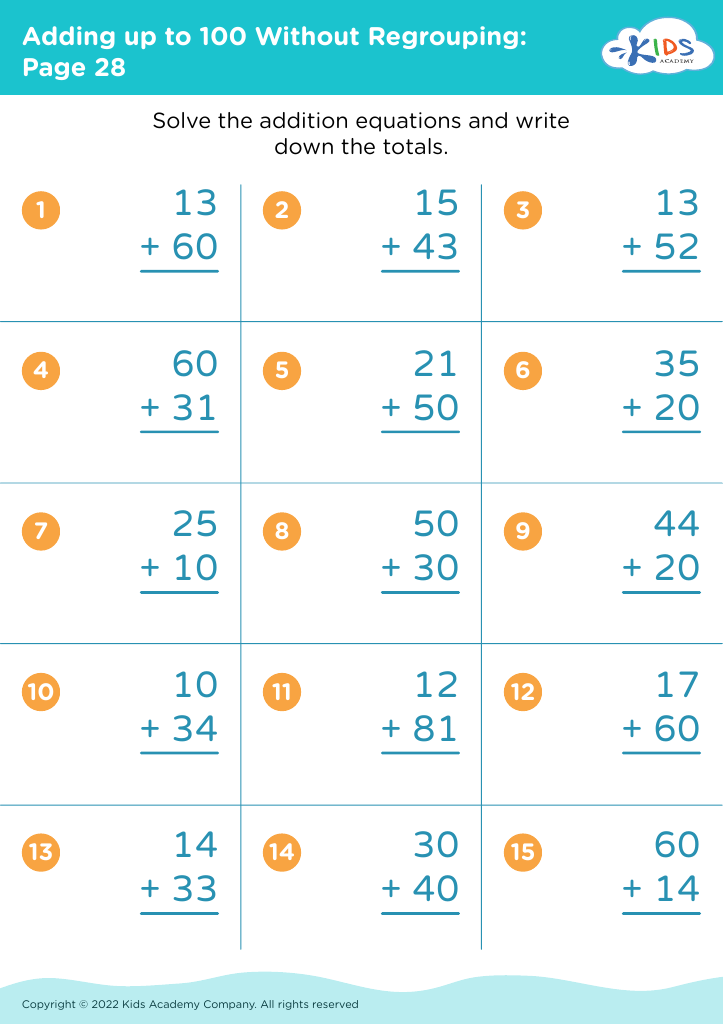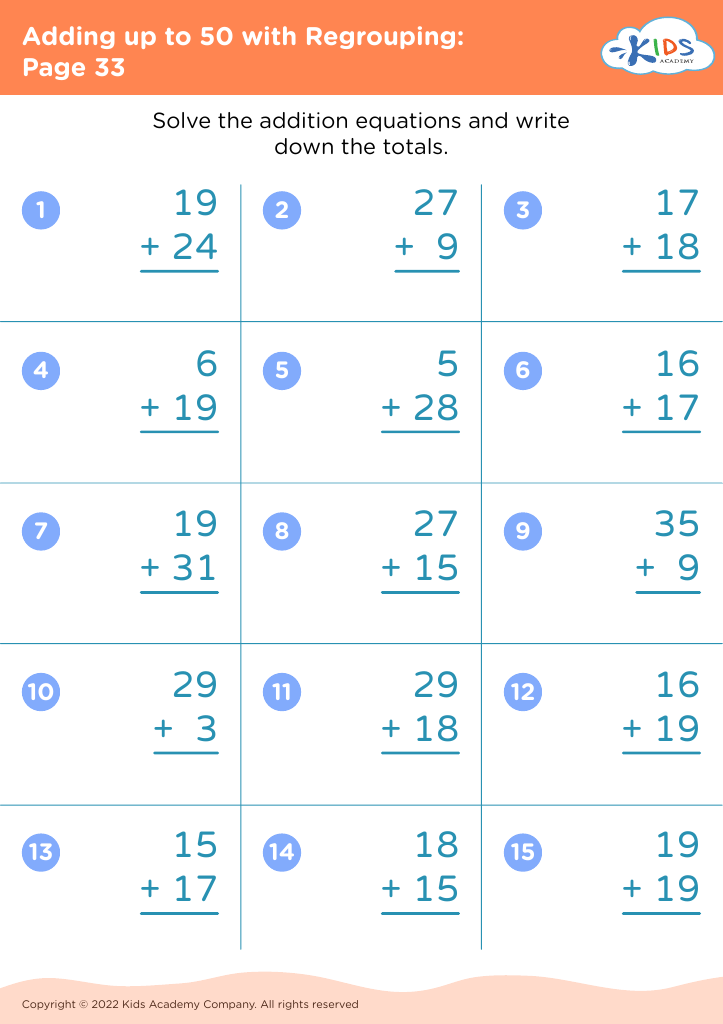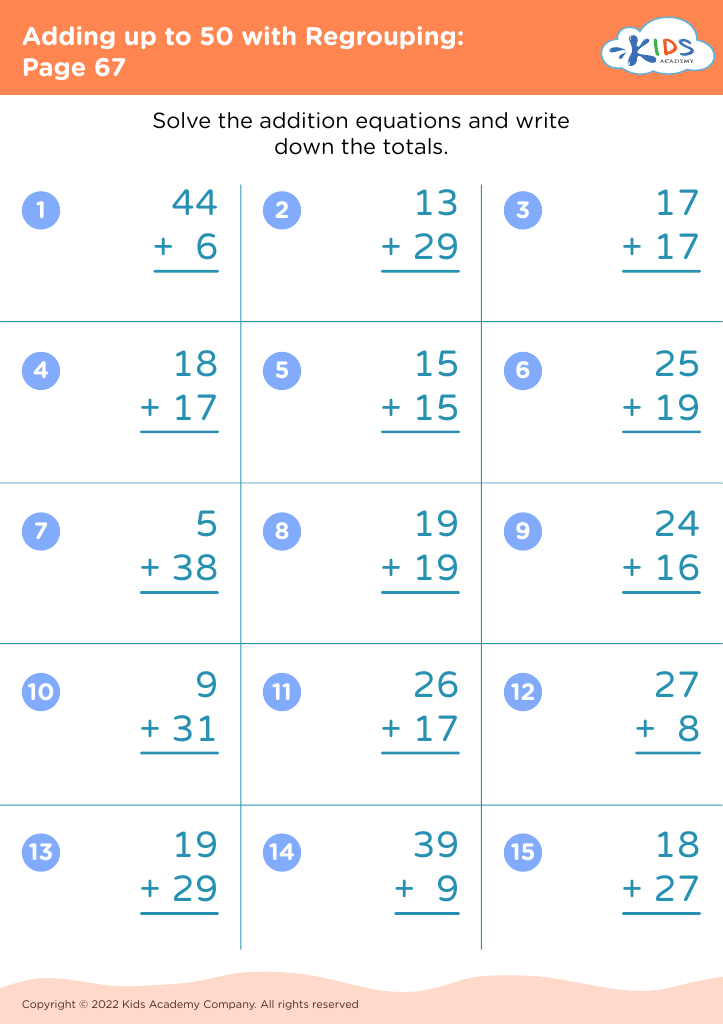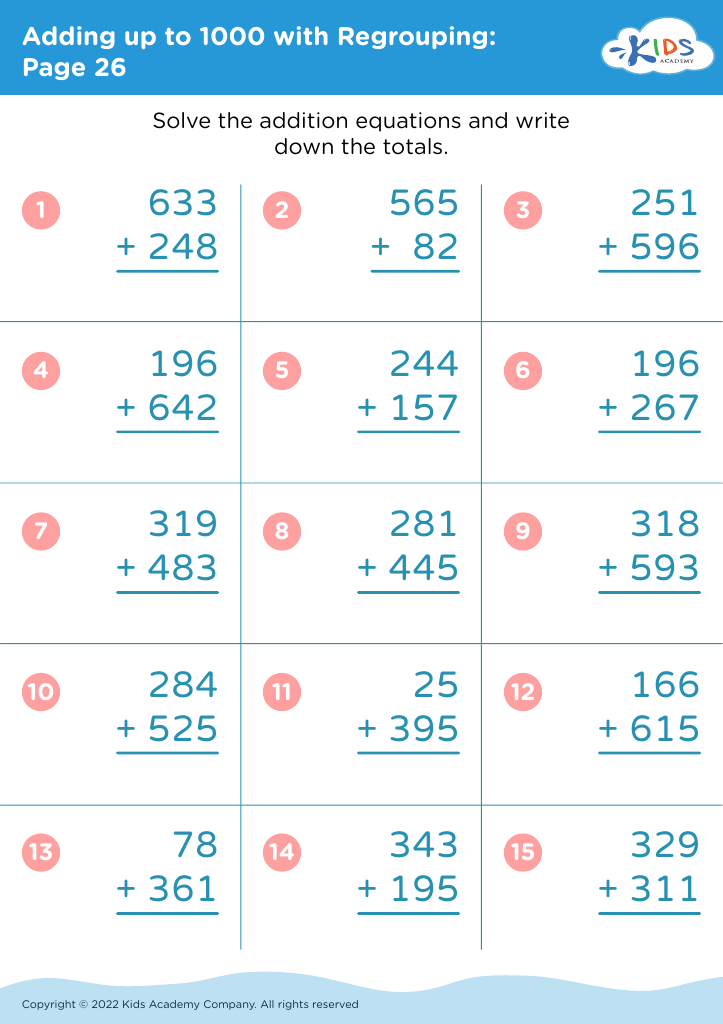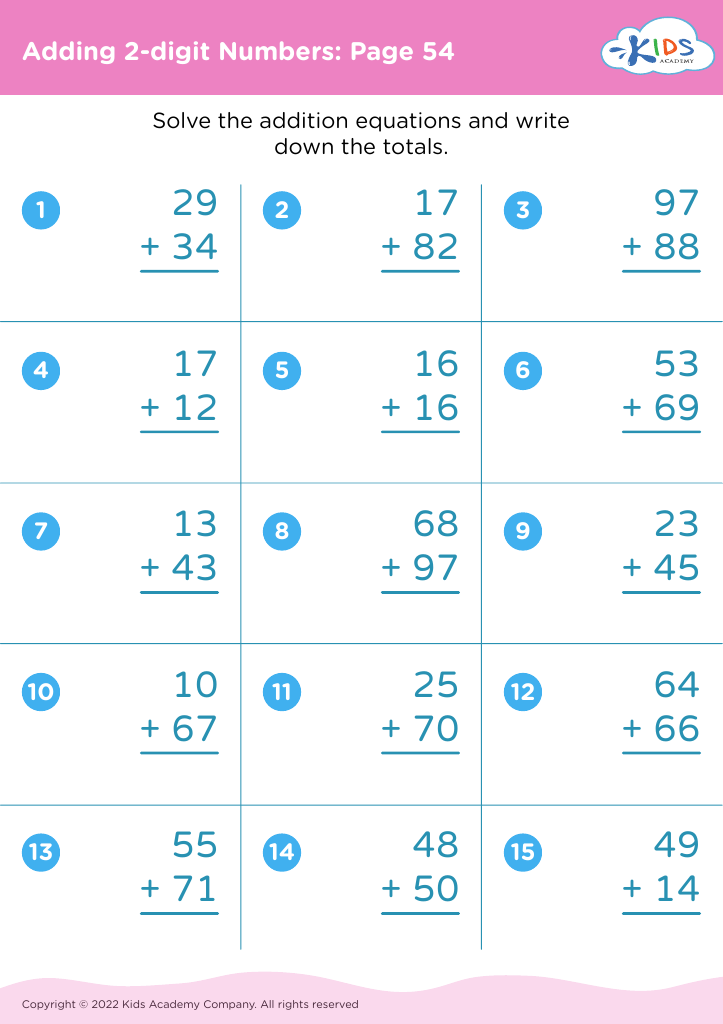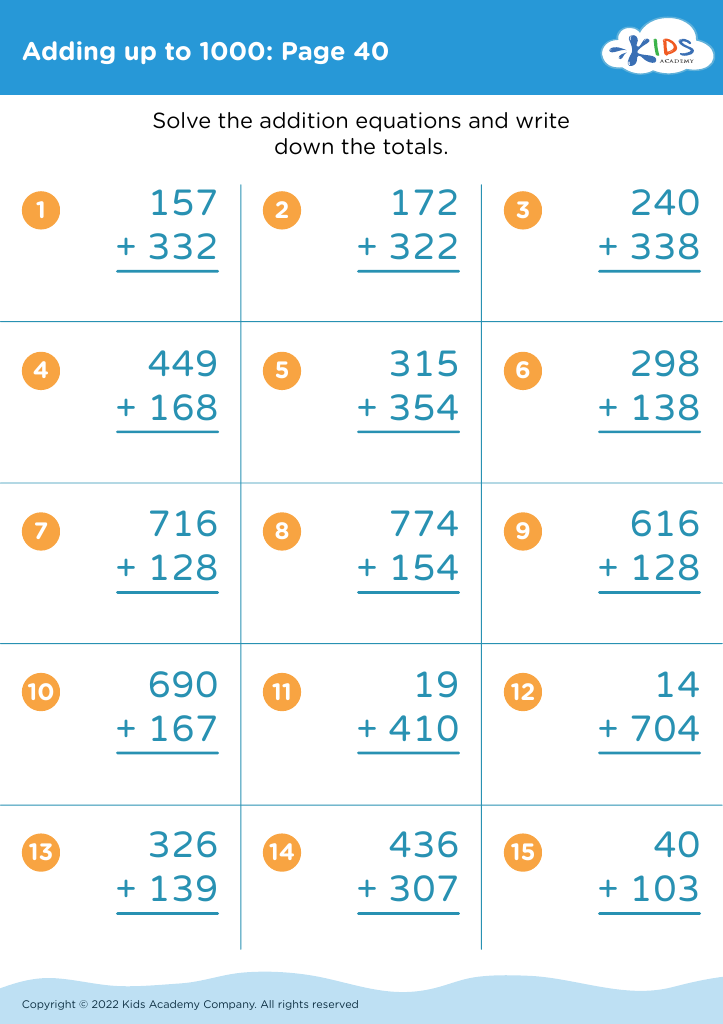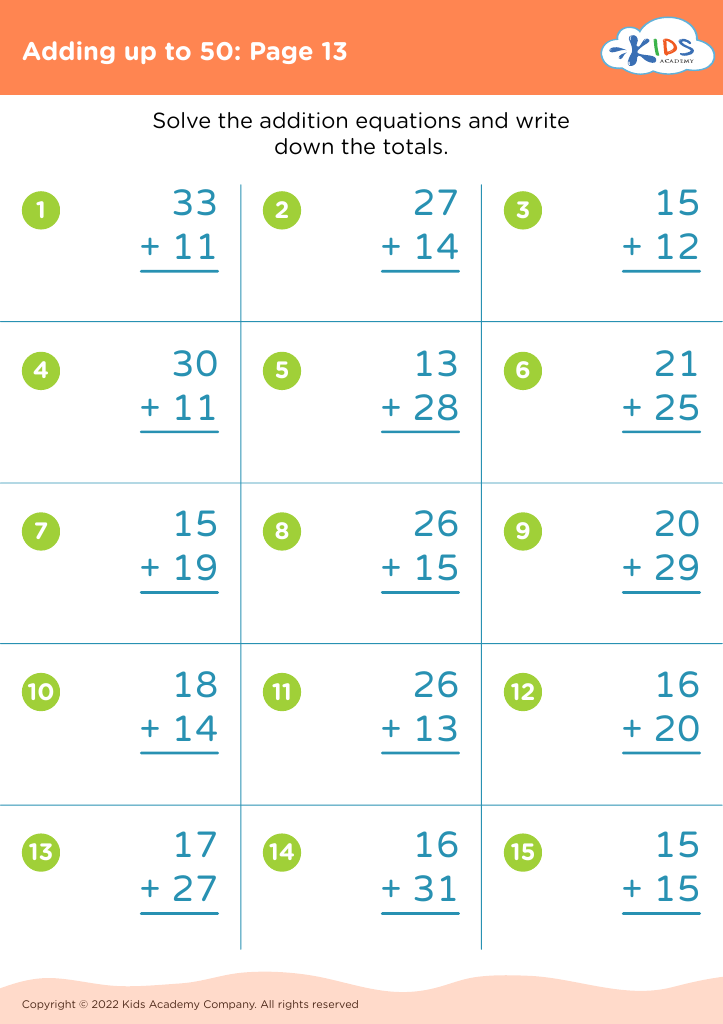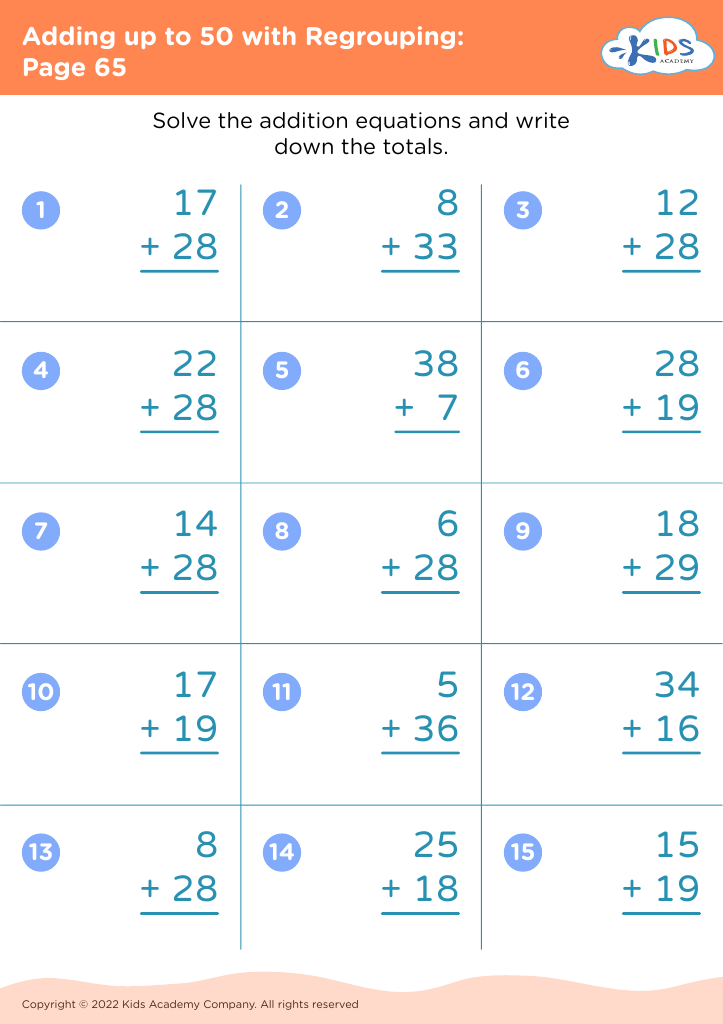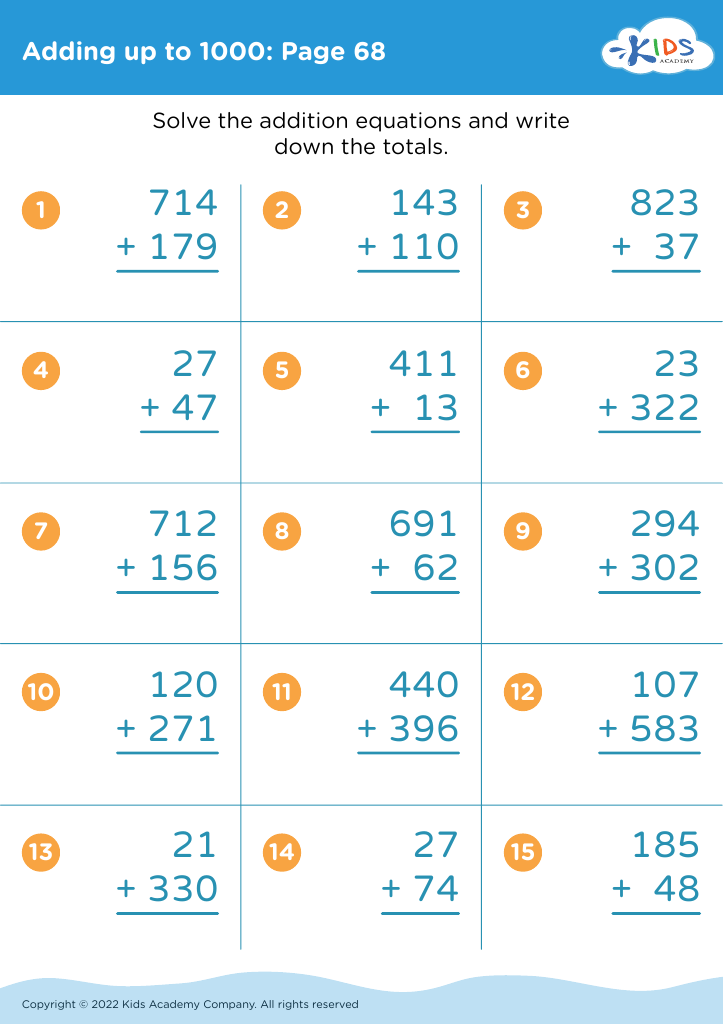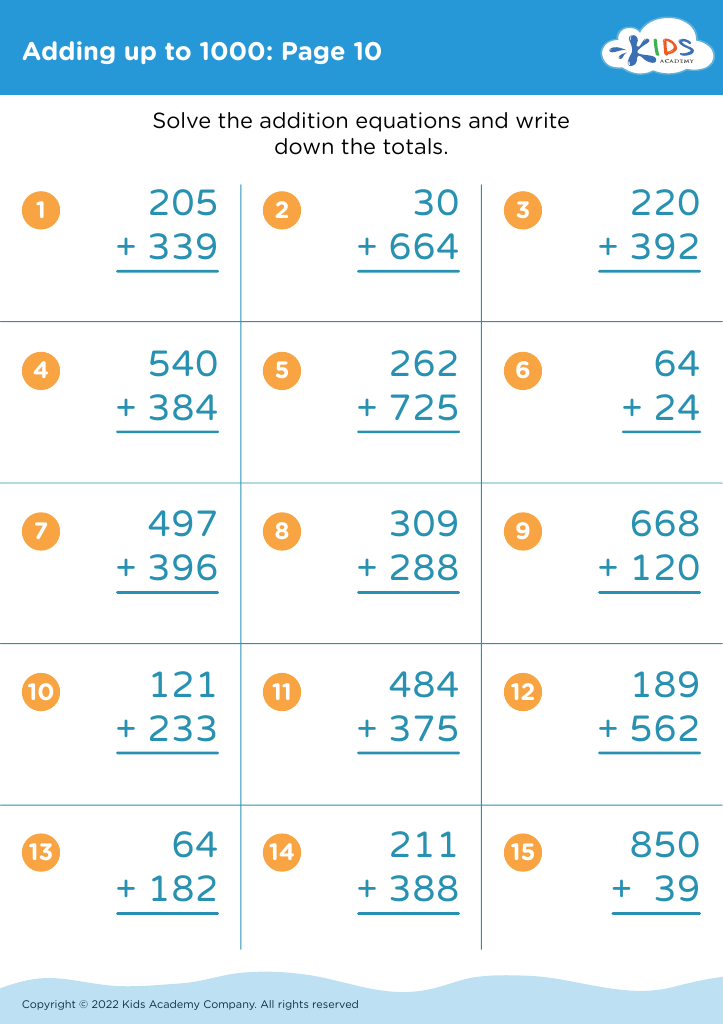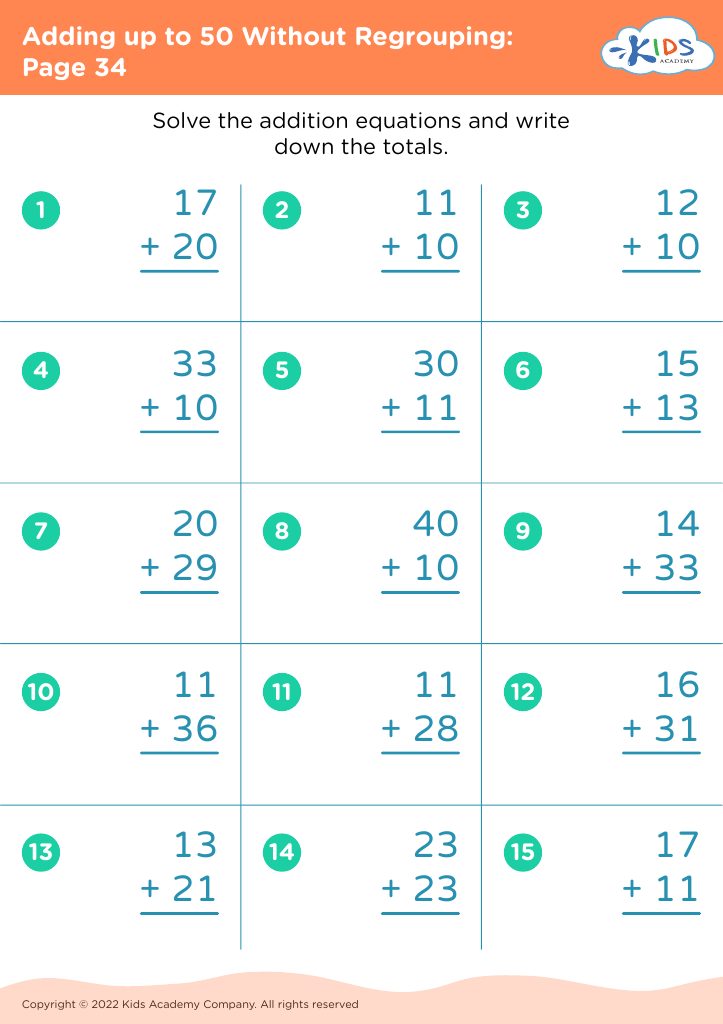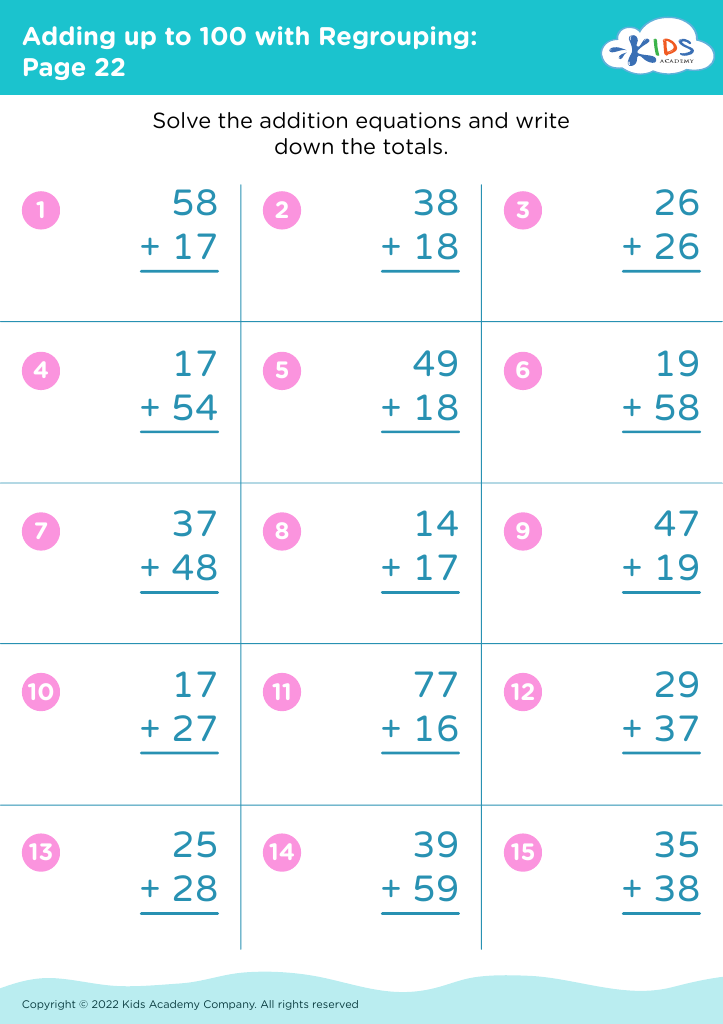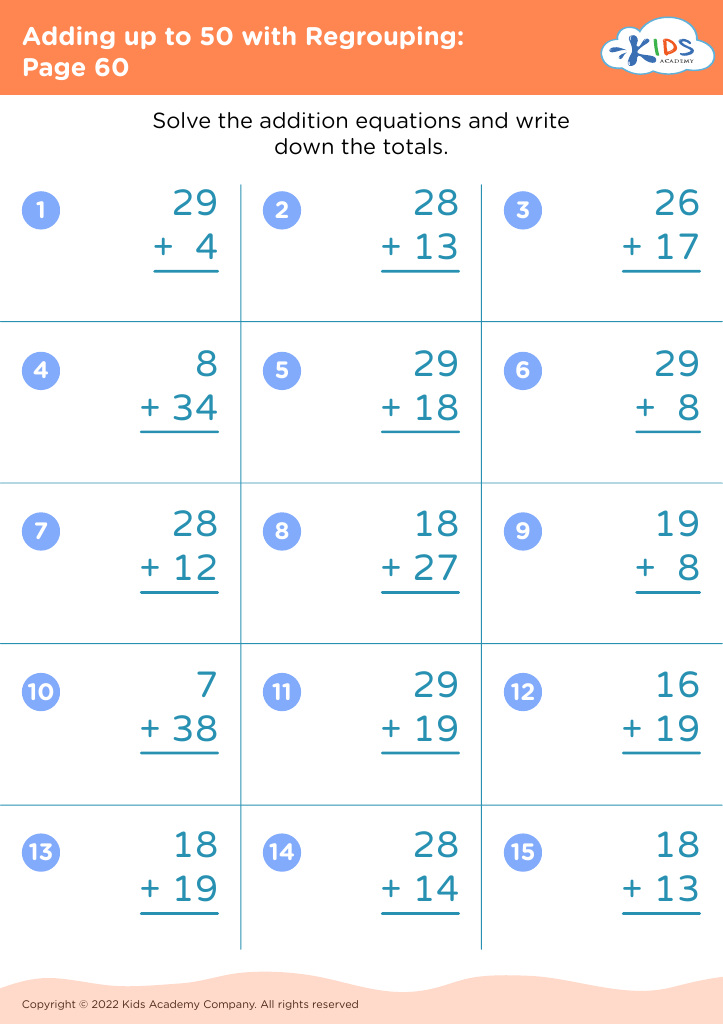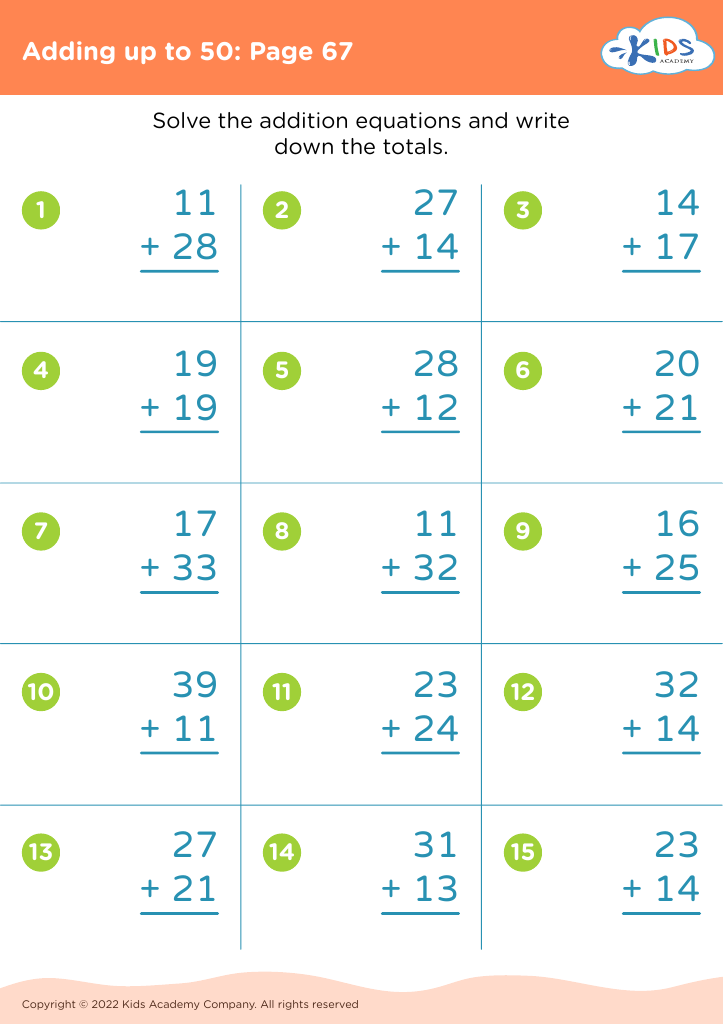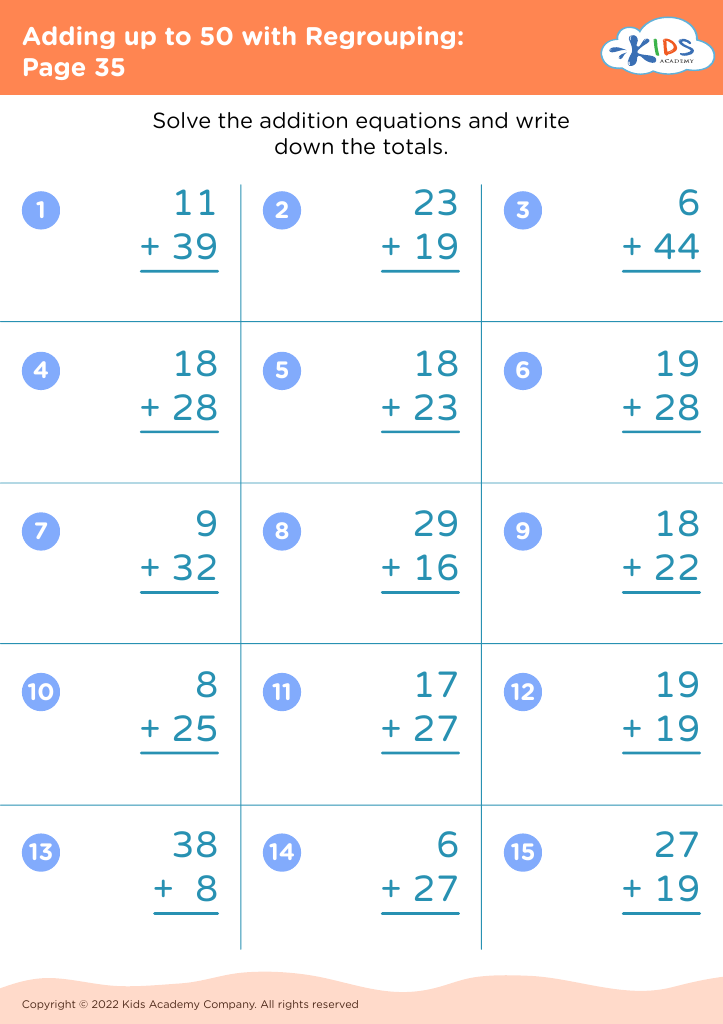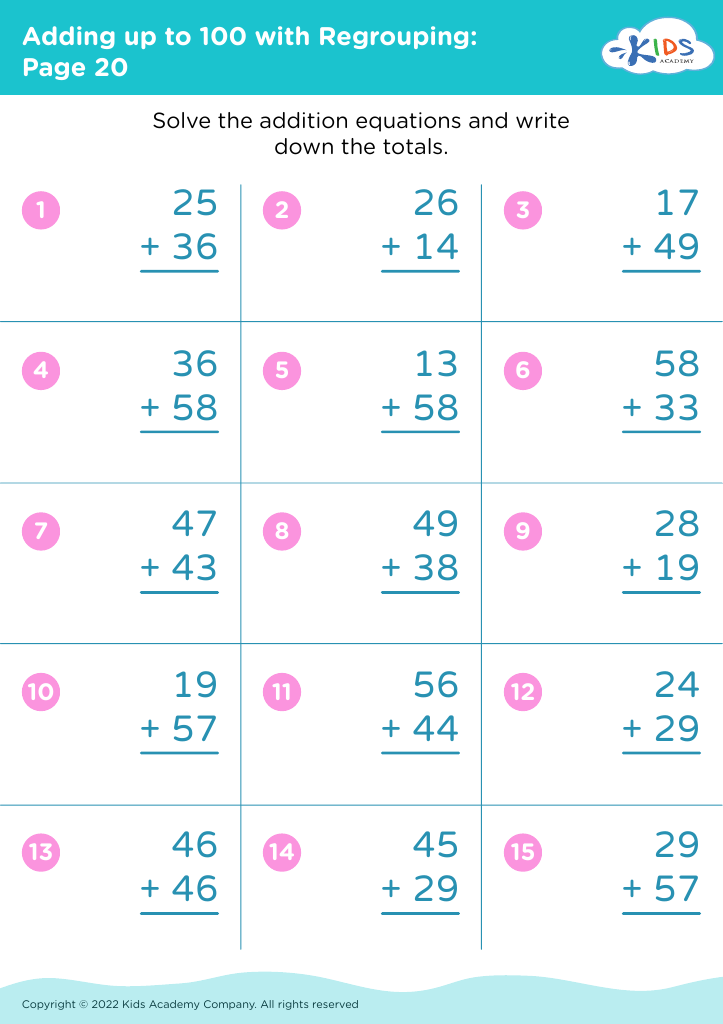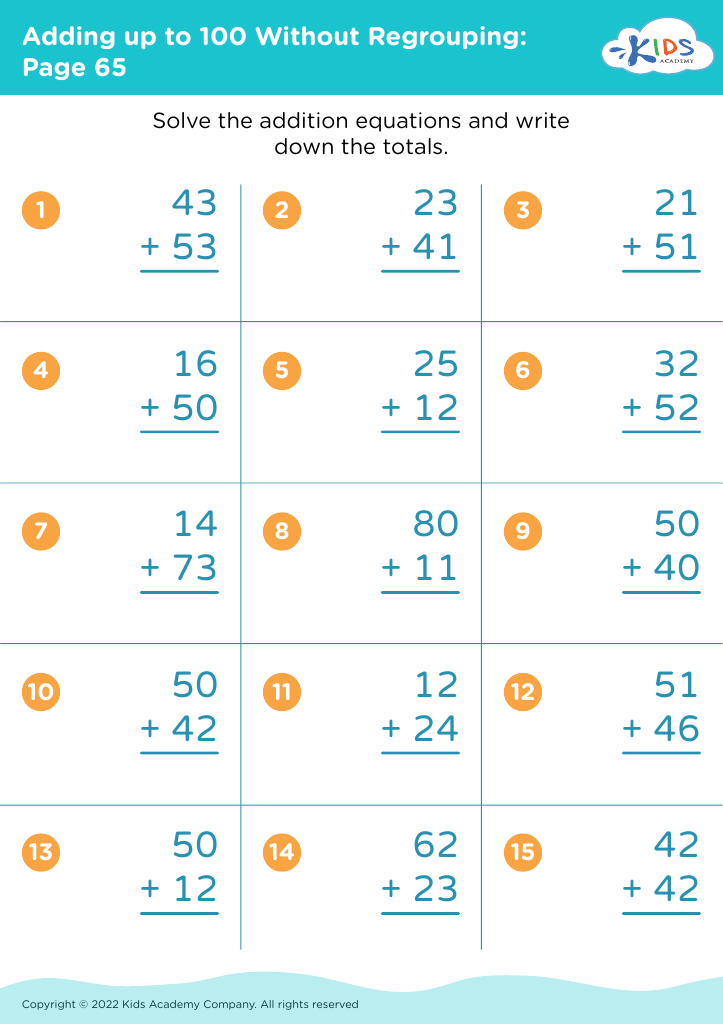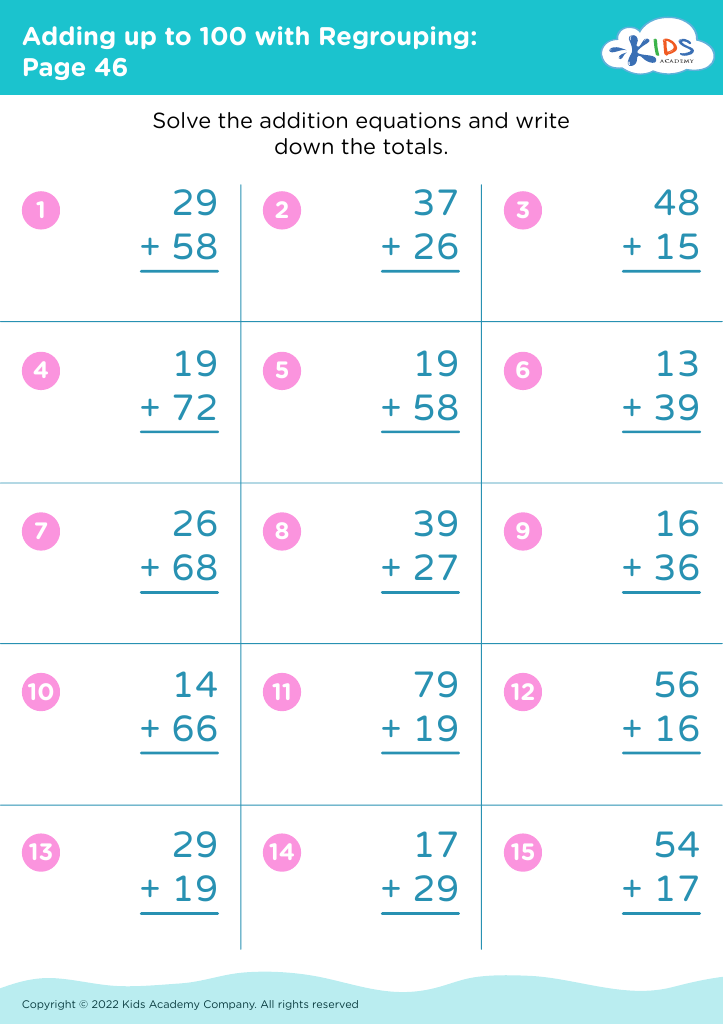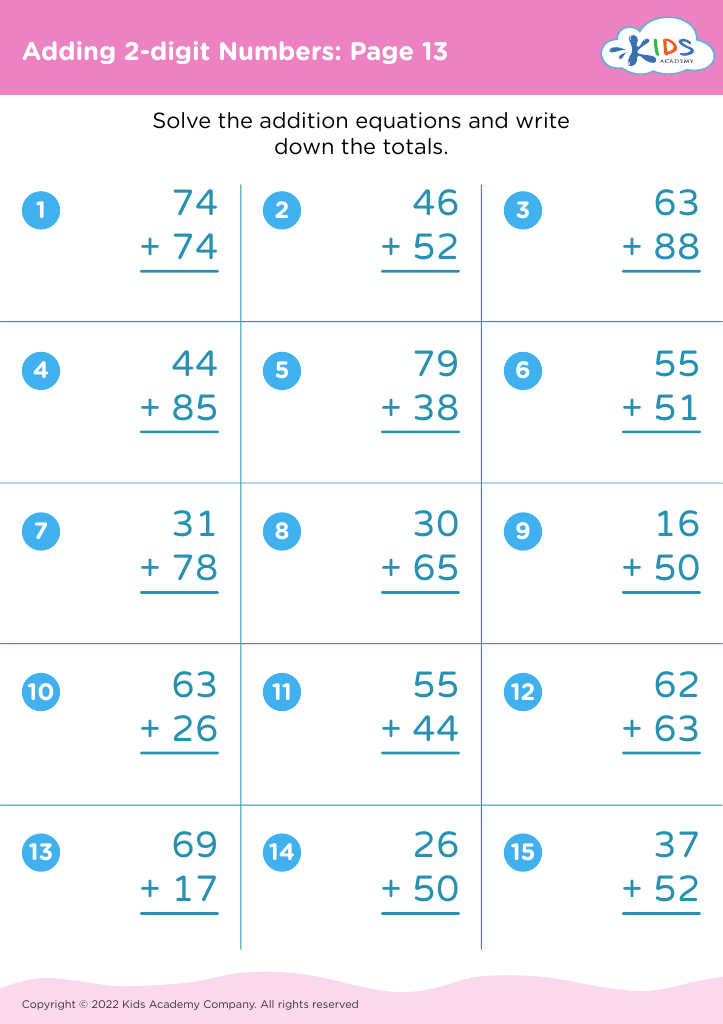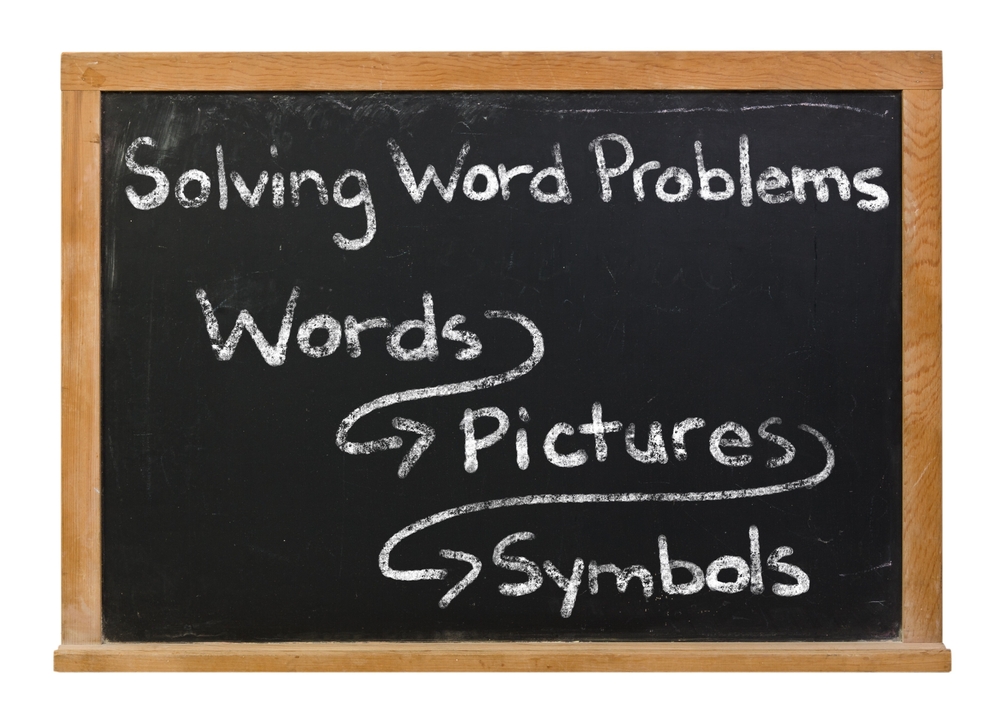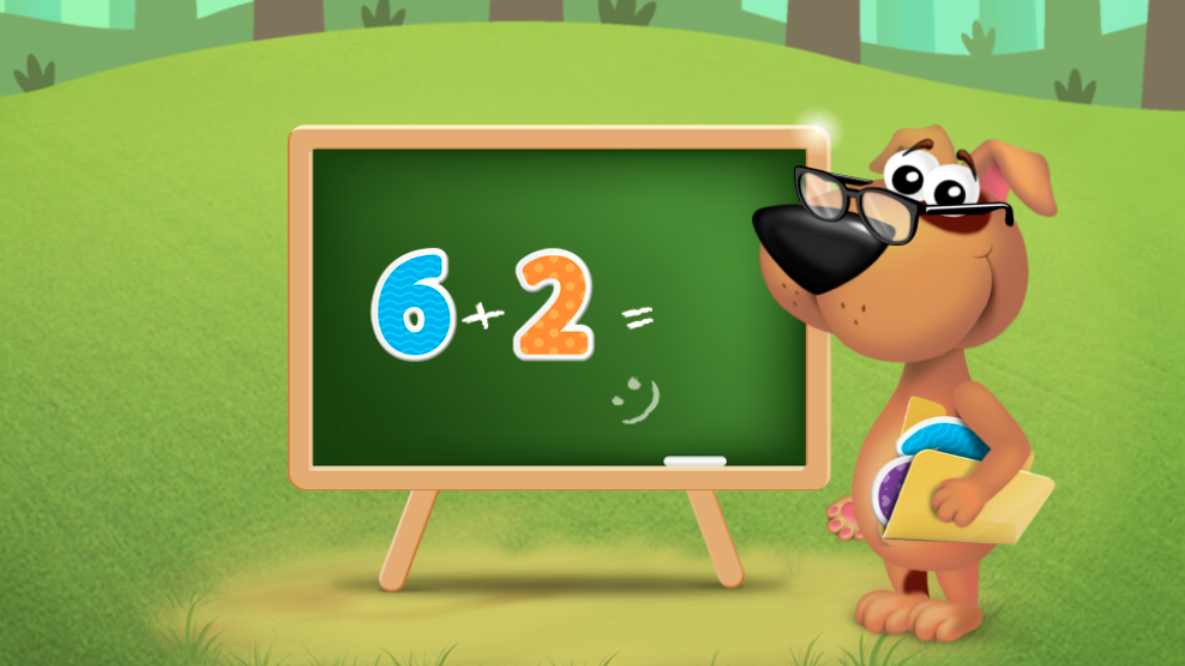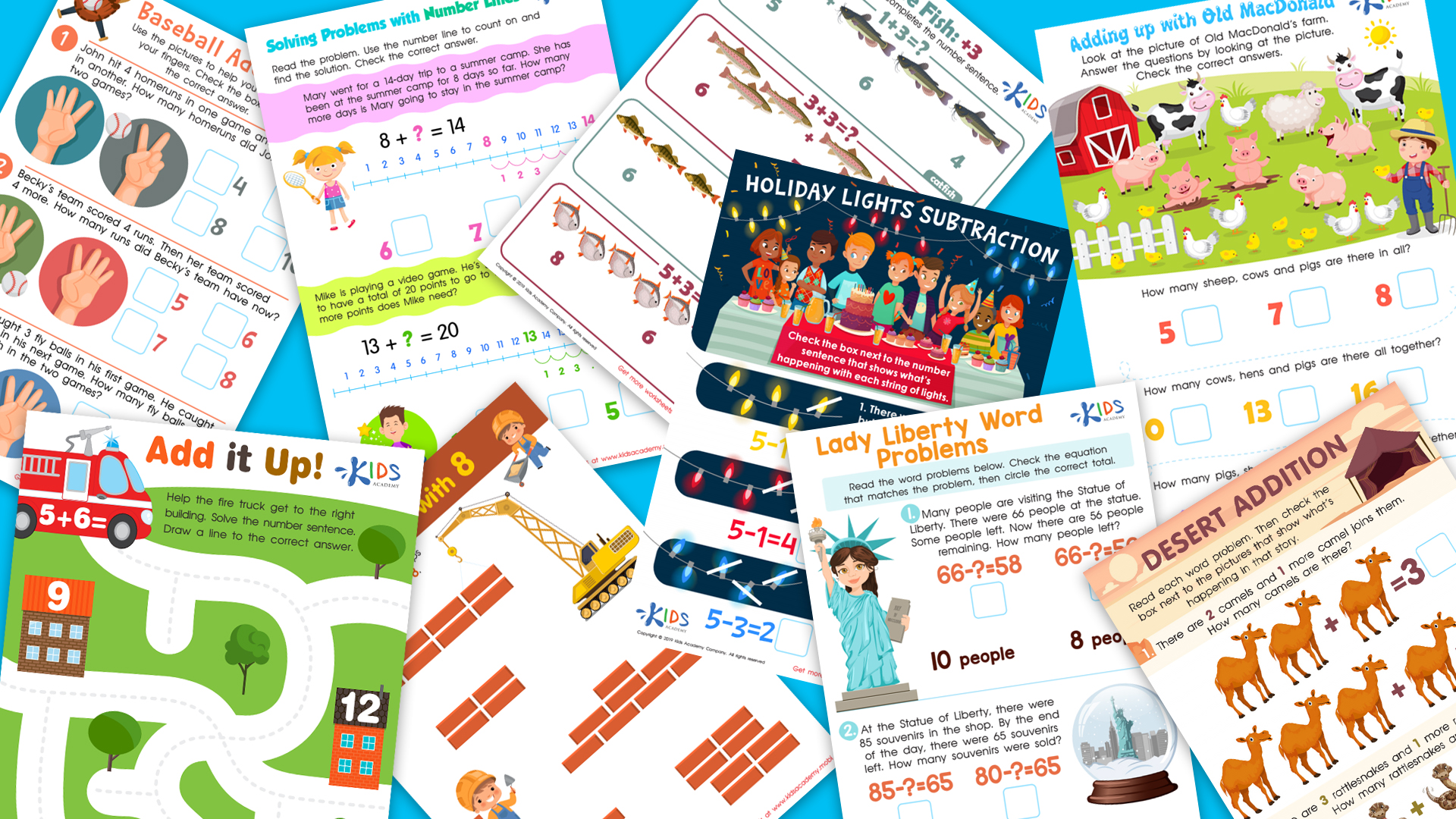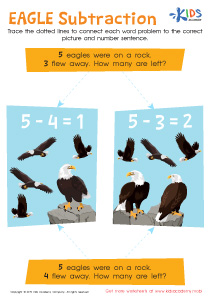Comparing Fractions Addition Worksheets for Ages 4-9
83 filtered results
-
From - To
Introduce young learners to the world of fractions with our Comparing Fractions Addition Worksheets designed for ages 4-9. These engaging worksheets help children understand the concept of fractions and how to add them, while also developing their comparison skills. Fun and colorful, each worksheet presents problems in a kid-friendly format, fostering confidence and excitement in learning. Our resources are perfect for both classroom and home use, offering essential practice for foundational math skills. Download and print these worksheets to support your child's mathematical journey and make learning fractions simple and enjoyable.
Comparing fractions addition for children ages 4-9 is pivotal in laying a strong mathematical foundation. At this developmental stage, young minds are rapidly absorbing and understanding new concepts, and introducing fractions helps in nurturing their numerical intuition and problem-solving abilities. Teaching children to compare fractions and add them improves their grasp of proportionality, equivalence, and parts of a whole, concepts that are central in advanced mathematics and everyday decision-making.
When parents and teachers invest time in teaching these skills, they contribute to the development of critical thinking and logical reasoning. Children learn to analyze relationships between numbers and recognize patterns, which are essential abilities across various subjects, not just mathematics. Early exposure to fractions also facilitates a smoother transition to more complex math topics in later grades, such as algebra and geometry.
Moreover, mastering fractions encourages perseverance and boosts confidence. When children succeed in understanding challenging concepts, they develop a positive attitude toward learning and a growth mindset that empowers them in all academic areas. Engaging activities that involve visuals, such as fraction bars or pie charts, make learning interactive and enjoyable, reinforcing the idea that math is fun and accessible. In summary, comparing fractions addition is crucial for cognitive and academic development, fostering a lifelong appreciation and competence in mathematics.
